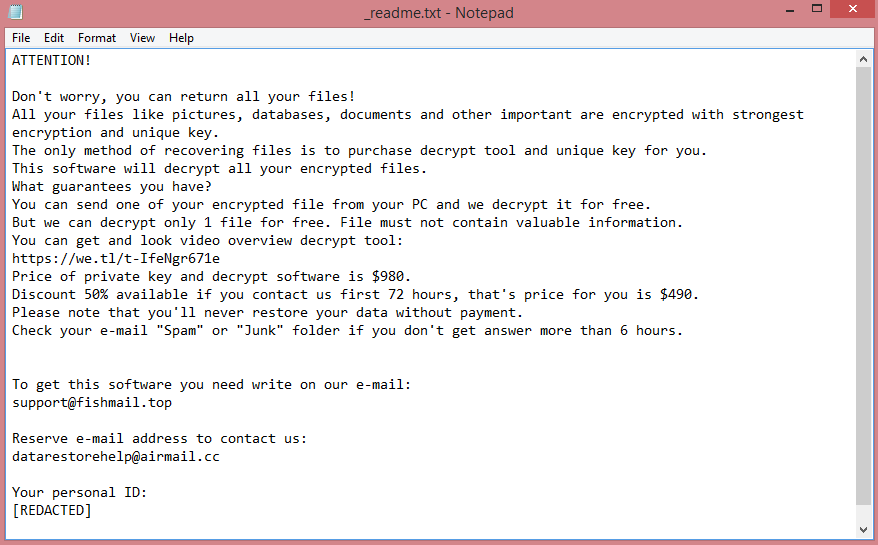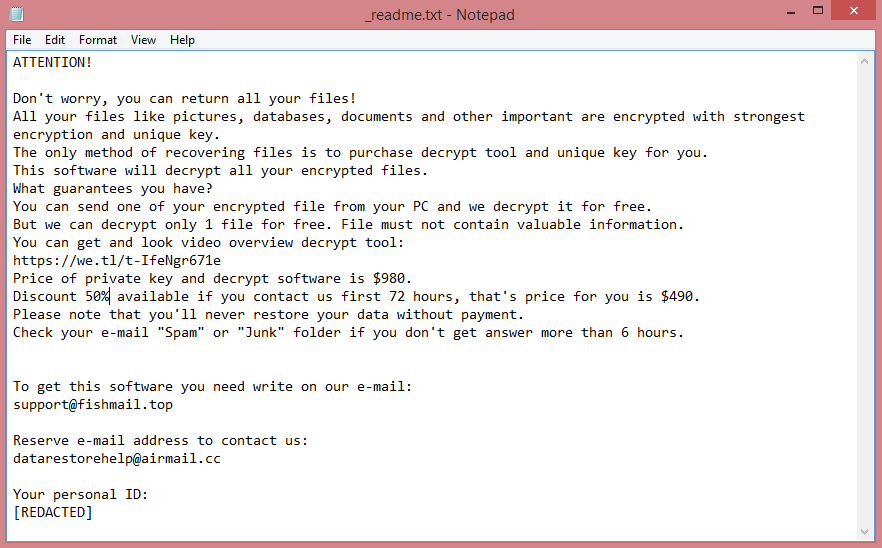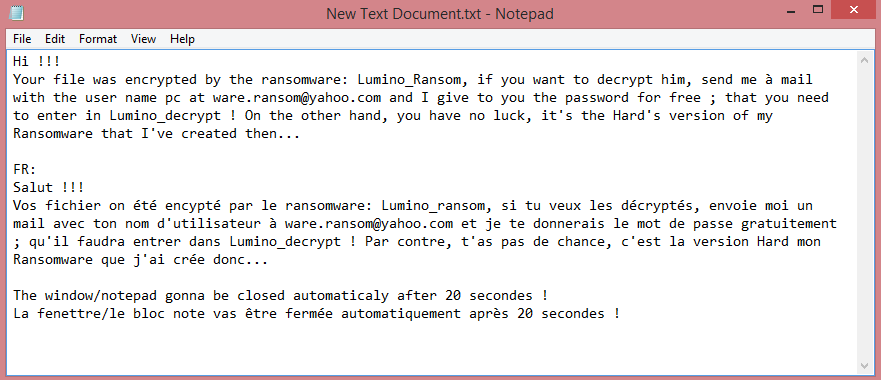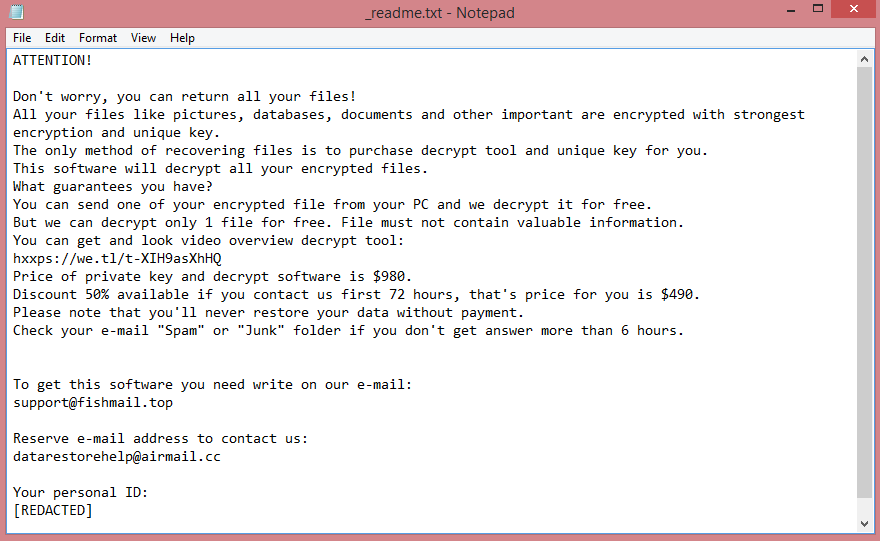
What is Zatp ransomware?
Zatp is a computer virus categorized as ransomware that was created to make hackers money. Ransomware programs accomplish this by encrypting the files and demanding payment for their decryption. The focus of this article is specifically Zatp ransomware, however. If you want to know more about ransomware in general, you’re welcome to use other resources on the internet, such as this Wikipedia article.
Zatp ransomware belongs to the STOP/Djvu ransomware family, which means that it shares most of its code with the Djvu virus. Generally, viruses that share the code are similar to each other, but in STOP/Djvu case, they’re almost identical. Compare Pozq, another ransomware in this family, and you will see it yourself.
Zatp does more than just encrypt files; it also renames them. All files encrypted by it receive .zatp file extension. Of course, Zatp also creates a ransom note to communicate with the victim. You can read its text on the image above, but basically, the hackers want $980 for decryption. To psychologically trick the victim, a discount is also offered.
It is not uncommon for the cybercriminals behind ransomware programs to ignore their victims after receiving the money, so paying them is not recommended. This guide will cover other ways to remove Zatp ransomware and decrypt .zatp files.
![Inlock ransom note:
¡¡¡TU EQUIPO HA SIDO CIFRADO!!!
Lo sentimos mucho, pero has sido objectivo de un ciberataque.
Todos tus datos personales han sido cifrados. Ponte encontacto conmigo para negociar el rescate.
Una vez me llegue el pago, te haré llegar la herramienta encargada de descifrar todos los ficheros.
Espero que no tengas nada de gran valor ;)
El siguiente código no lo pierdas o no podrás recuperar nunca más tus datos:
[REDACTED]
This is the end of the note. Below you fill find a guide explaining how to remove Inlock ransomware.](https://www.computips.org/wp-content/uploads/2022/11/how-to-remove-inlock-ransomware.png)
![Dom ransom note:
!!! ALL YOUR FILES ARE ENCRYPTED !!!
All your files, documents, photos, databases and other important files are encrypted.
You are not able to decrypt it by yourself! The only method of recovering files is to purchase an unique
private key.
Only we can give you this key and only we can recover your files.
Do you really want to restore your files?
You can write us to our mailboxes: dekrypt666@onionmail.org
(in subject line please write your MachineID: [REDACTED] and LaunchID: [REDACTED])
Attention!
* Do not rename encrypted files.
* Do not try to decrypt your data using third party software, it may cause permanent data loss.
* Decryption of your files with the help of third parties may cause increased price (they add their fee
to our) or you can become a victim of a scam.
This is the end of the note. Below you will find a guide explaining how to remove Dom ransomware.](https://www.computips.org/wp-content/uploads/2022/11/how-to-remove-dom-ransomware.png)
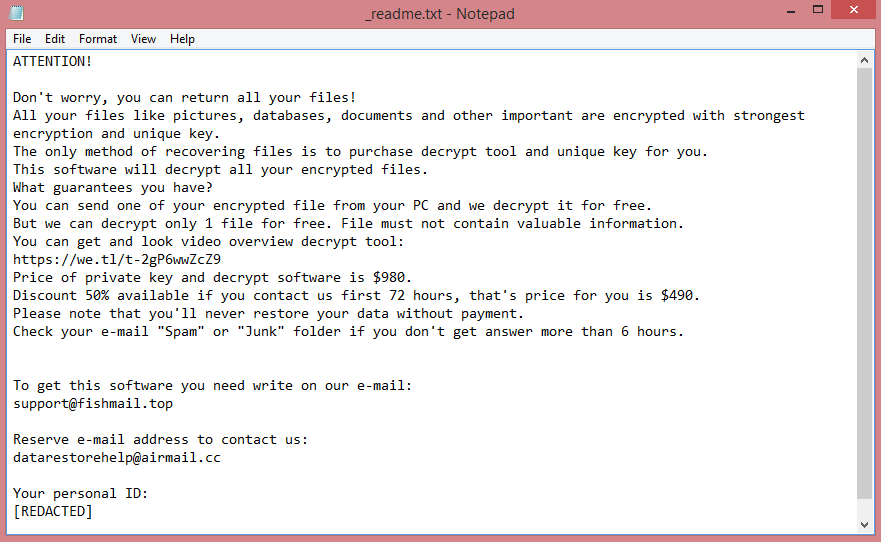
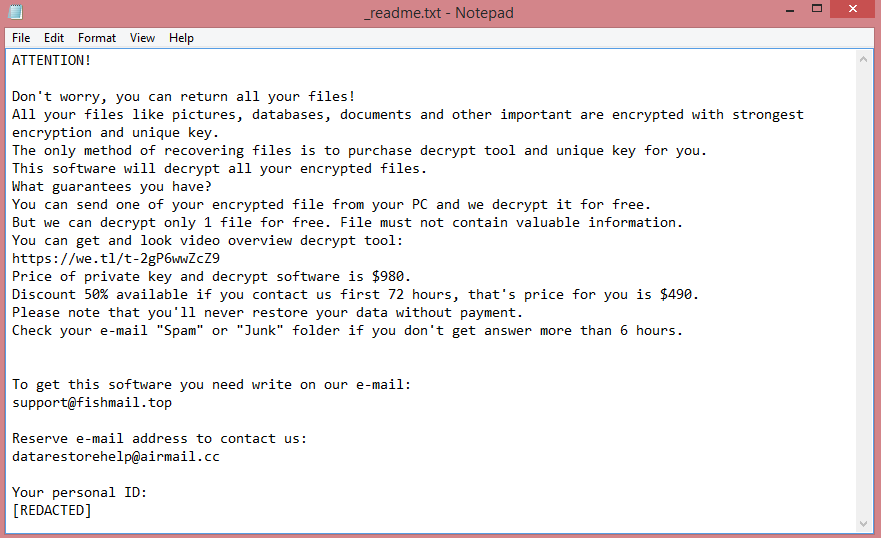
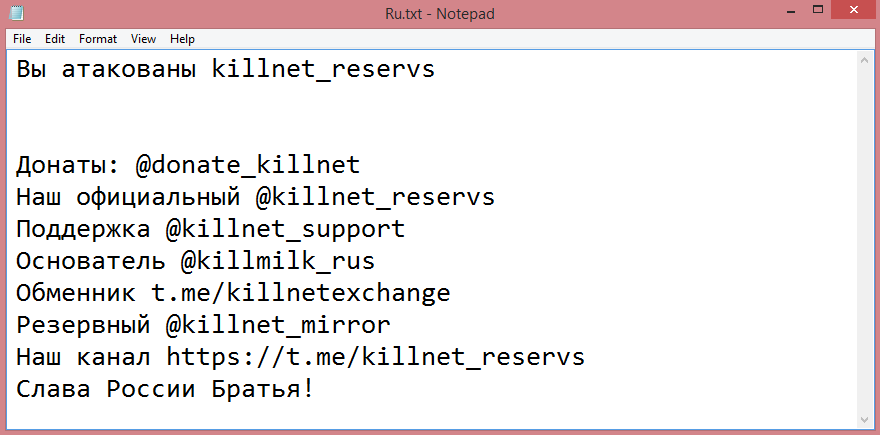
![Eking ransom note:
Your Files Are Has Been Locked
Your Files Has Been Encrypted with cryptography Algorithm
If You Need Your Files And They are Important to You, Dont be shy Send Me an Email
Send Test File + The Key File on Your System (File Exist in C:/ProgramData example : RSAKEY-SE-24r6t523 pr RSAKEY.KEY) to Make Sure Your Files Can be Restored
Get Decryption Tool + RSA Key AND Instruction For Decryption Process
Attention:
1- Do Not Rename or Modify The Files (You May loose That file)
2- Do Not Try To Use 3rd Party Apps or Recovery Tools ( if You want to do that make an copy from Files and try on them and Waste Your time )
3-Do not Reinstall Operation System(Windows) You may loose the key File and Loose Your Files
Your Case ID : [REDACTED]
OUR Email :ekingm2023@outlook.com
in Case of no answer: ekingm2023@onionmail.org
This is the end of the note. Below you will find a guide explaining how to remove Eking ransomware.](https://www.computips.org/wp-content/uploads/2022/10/how-to-remove-eking-ransomware.png)
